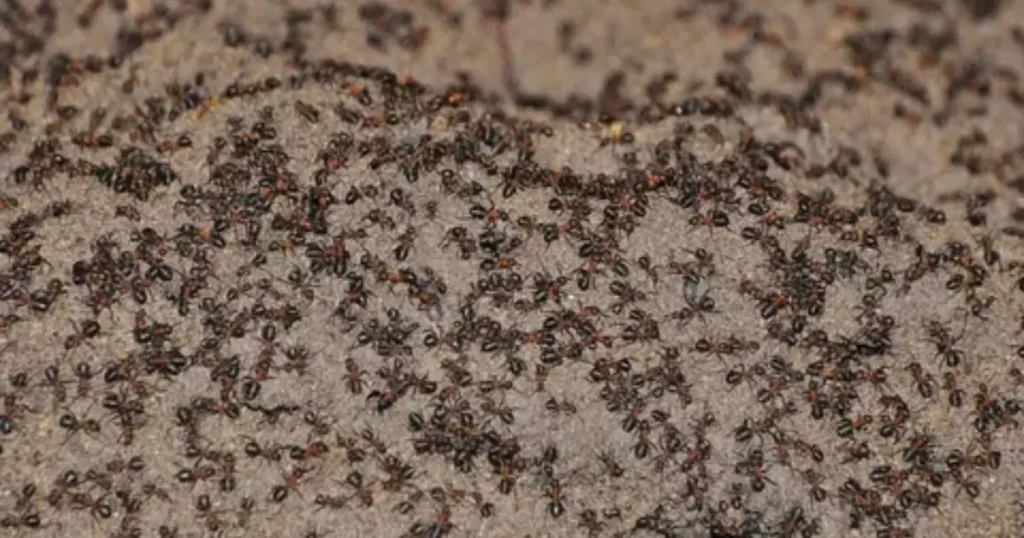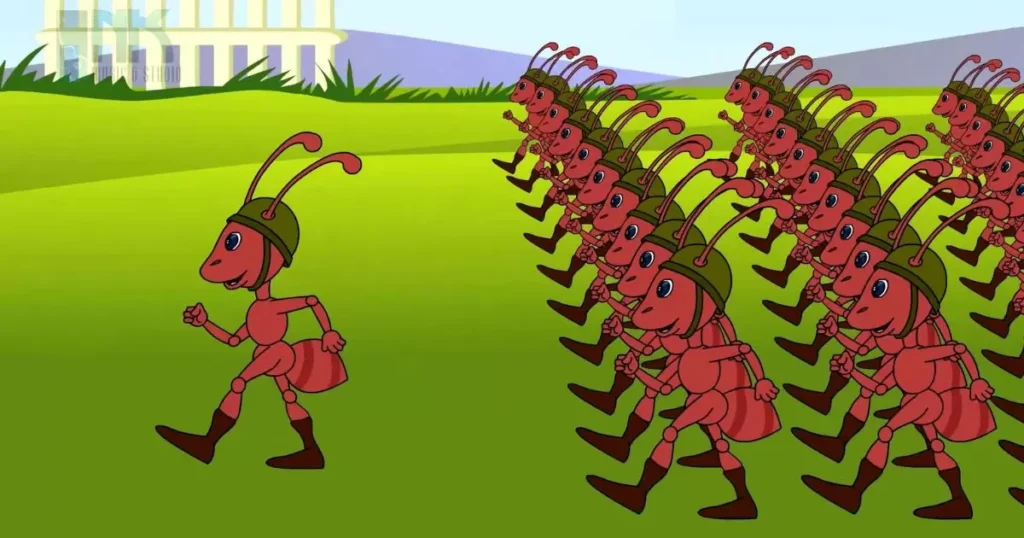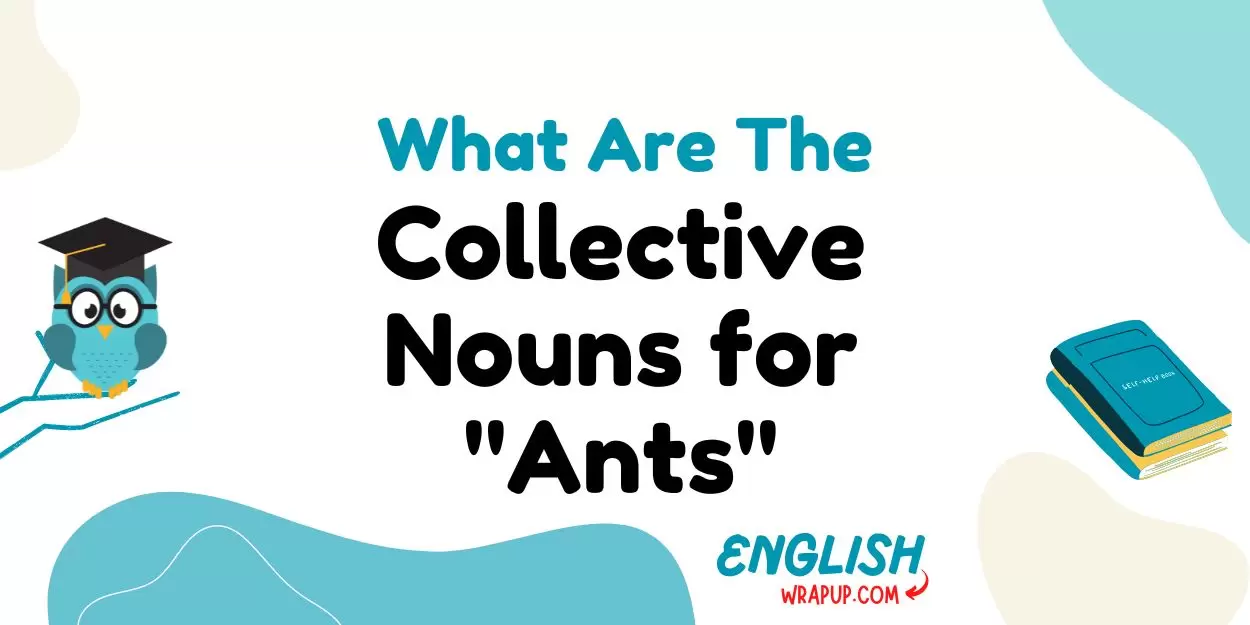Ants, the industrious insects found in almost every ecosystem on Earth, are known for their remarkable social behavior and organizational skills. When observed together, these tiny creatures are described using various collective nouns, each offering insight into their group dynamics and activities.
In this article, we will explore the concept of collective nouns and delve into some fascinating examples specifically related to ants.
What Are Collective Nouns?
Collective nouns are words used to describe a group of individuals or things considered as a single entity. These nouns simplify our language and provide a more vivid and interesting way to refer to collections of objects, animals, or people.
For example, instead of saying “a group of birds,” we can say “a flock of birds,” which is more expressive and efficient.
Best Collective Nouns for Ants
- A colony of ants
- A swarm of ants
- A nest of ants
- A mound of ants
- An army of ants
- A cluster of ants
- A congregation of ants
- A trail of ants
- A plague of ants
- A stream of ants
Let’s explore each of these collective nouns in more detail.
A Colony of Ants
Explanation
A “colony of ants” refers to a large group of ants living together in a complex social structure, typically comprising various castes such as workers, soldiers, and the queen.
Scenario
In the garden, a colony of ants diligently worked together to gather food and expand their underground nest.

A Swarm of Ants
Explanation
A “swarm of ants” describes a large number of ants moving together in a coordinated manner, often seen during migration or when foraging for food.
Scenario
After heavy rain, a swarm of ants emerged from their nest, marching in a determined line to find higher ground.
A Nest of Ants
Explanation
A “nest of ants” refers to the underground or above-ground structure where ants live and raise their young, typically constructed from soil or organic matter.
Scenario
Underneath the old tree stump, a nest of ants buzzed with activity as workers tended to the growing larvae.
A Mound of Ants
Explanation
A “mound of ants” denotes a large heap of soil or debris created by ants as they excavate their underground nests.
Scenario
On the edge of the hiking trail, a mound of ants rose from the forest floor, marking the entrance to their subterranean kingdom.
An Army of Ants
Explanation
An “army of ants” emphasizes the disciplined and organized nature of ants as they move together with purpose, often to defend their territory or gather resources.
Scenario
When disturbed, an army of ants quickly mobilized, swarming over any intruders with their formidable numbers.

A Cluster of Ants
Explanation
A “cluster of ants” describes a closely-packed group of ants gathering around a food source or engaging in social interactions.
Scenario
Underneath the picnic table, a cluster of ants feasted on the crumbs left behind by careless visitors.
A Congregation of Ants
Explanation
A “congregation of ants” suggests a gathering or assembly of ants, often for communal activities such as mating or decision-making.
Scenario
In the clearing, a congregation of ants formed a swirling mass as they engaged in their intricate mating rituals.
A Trail of Ants
Explanation
A “trail of ants” refers to the path or route established by ants as they travel between their nest and food sources, marked by pheromone trails.
Scenario
Across the kitchen floor, a trail of ants stretched from the sugar jar to their hidden nest behind the cupboard.
A Plague of Ants
Explanation
A “plague of ants” conveys the overwhelming and invasive nature of ants when they infest an area in large numbers, causing disruption and annoyance.
Scenario
The garden was overrun by a plague of ants, devouring everything in their path and leaving destruction in their wake.
Other Ways to Say “To Answer Your Question”
A Stream of Ants
Explanation
A “stream of ants” describes the continuous flow of ants moving in a steady and uninterrupted procession.
Scenario
Along the forest path, a stream of ants flowed like a miniature river, carrying bits of leaves and food back to their nest.
Interesting Facts About Ants
Ants are highly social insects that exhibit complex behaviors and communication systems. They are capable of coordinating their activities through the use of pheromones and tactile signals.
Ants also play vital roles in ecosystems as predators, scavengers, and seed dispersers. Some ant species even engage in agriculture, cultivating fungi for food. Additionally, ants are known for their impressive strength, with some species able to carry objects many times their own body weight.
Final Thought
Collective nouns provide a fascinating glimpse into the world of ants and their complex social structures. These nouns not only describe groups of ants but also reflect the intricate interactions and organized behaviors that characterize ant colonies.
Next time you encounter a group of ants, consider the various ways you can describe them and appreciate the remarkable cooperation and community they exhibit.



